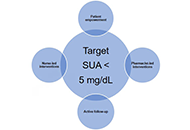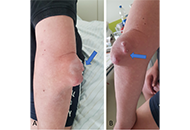5 results in Exploration of Musculoskeletal Diseases
Latest
Sort by :
- Latest
- Most Viewed
- Most Downloaded
- Most Cited
Open Access
Original Article
Infection after reconstruction of the anterior cruciate ligament
Elisha Krasin ... Yaniv Warschawski
Published: February 27, 2023 Explor Musculoskeletal Dis. 2023;1:26–30

Open Access
Perspective
Towards a more ambitious uricemia target to improve joint and cardiovascular outcomes in gout
Enrique Calvo-Aranda, Fernando Perez-Ruiz
Published: February 27, 2023 Explor Musculoskeletal Dis. 2023;1:20–25

Open Access
Case Report
Similarities and differences between gouty arthritis and rheumatoid arthritis—an interesting case with a short look into the literature
David Kiefer ... Juergen Braun
Published: February 24, 2023 Explor Musculoskeletal Dis. 2023;1:11–19

Open Access
Original Article
Utility of dimethylsulfoxide to preserve synovial fluid samples for microcrystal detection and identification
Fernando Pérez-Ruiz ... Juan J. Mateos-Mazón
Published: February 21, 2023 Explor Musculoskeletal Dis. 2023;1:4–10

Open Access
Editorial
Opening editorial for exploration in musculoskeletal diseases
Fernando Perez-Ruiz
Published: January 01, 2023 Explor Musculoskeletal Dis. 2023;1:1–3

Journal Information
 Previous
Previous